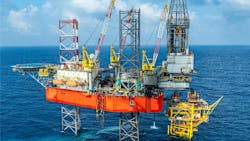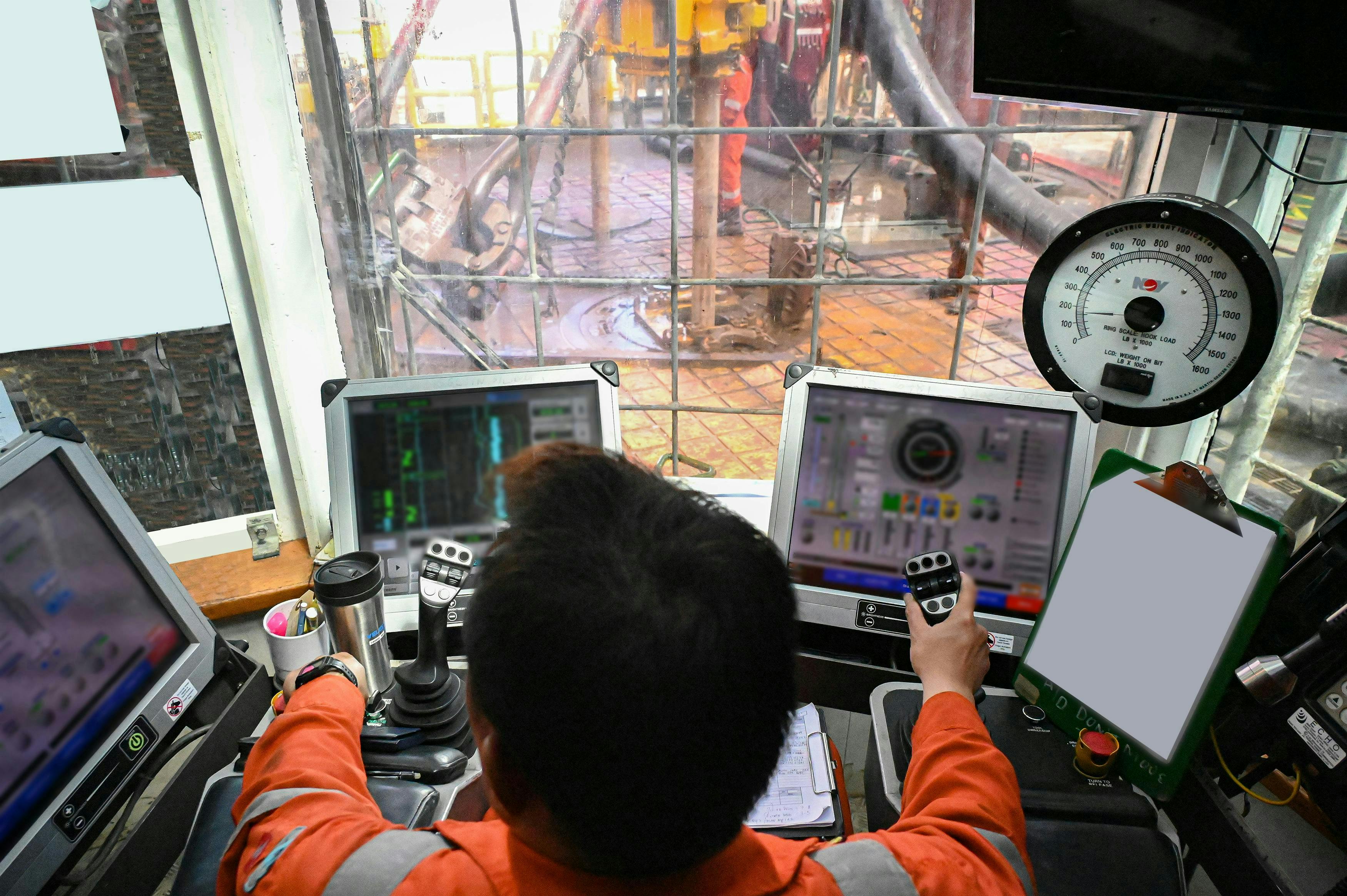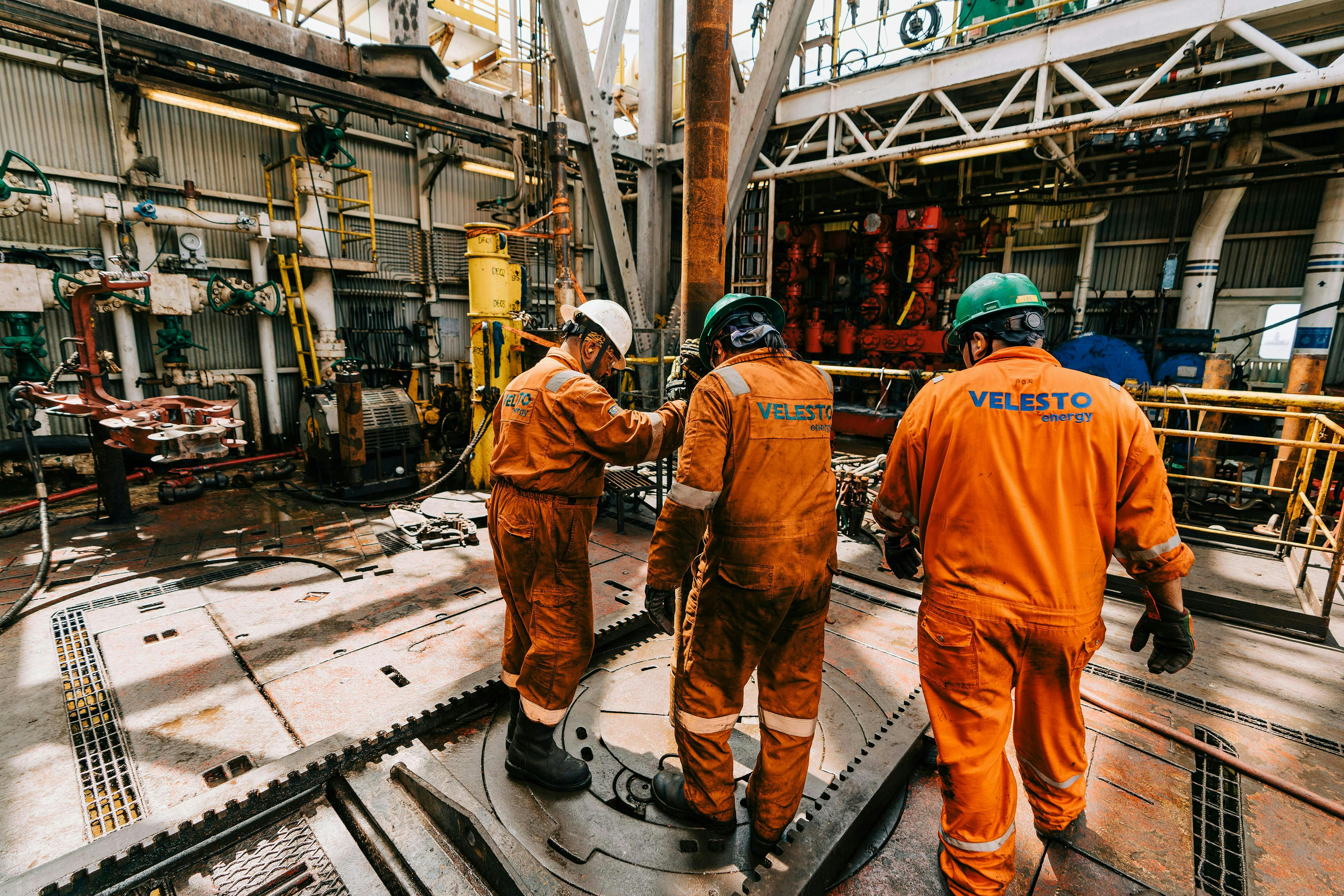Executive Q&A: Velesto upgrading jackup drilling fleet for operations offshore Southeast Asia
By Jeremy Beckman, Editor-Europe
Oil and gas producers across Southeast Asia are looking to replenish their reserves and maximize production in order to safeguard domestic supplies. This is creating opportunities for international and local drilling contractors, with growing demand for higher-spec offshore rigs with capabilities such as automation and digital solutions for performance management.
Offshore spoke to Megat Zariman Abdul Rahim, president of Kuala Lumpur-based Velesto Energy Berhad, about how the company has responded to these emerging needs.
Offshore: Can you explain how the group and its various different entities operate in the Asia-Pacific (APAC) region?
Megat Zariman: Velesto Energy Berhad is the holding company overseeing several operating subsidiaries, each focused on specific segments of the upstream oil and gas services sector. The structure allows for operational focus while leveraging group-wide synergies. Velesto Drilling Sdn Bhd focuses on jackup drilling services and typically undertakes drilling contracts such as those recently awarded in Indonesia, Thailand and Vietnam. Velesto Workover Sdn Bhd, meanwhile, specializes in offshore wells workover and plug & abandonment (P&A) services through two dedicated hydraulic workover units, which are mobilized independently on clients’ platforms. Velesto as a group has focused on developing a performance-driven culture, a strong safety record and a practical approach to digitalization and new technology, also broadening its capabilities beyond traditional drilling.
Offshore: How long has the group been providing drilling services, and do its rigs operate exclusively in the APAC region?
Megat Zariman: Velesto has been providing drilling services for over 15 years, with a strong presence in the Asia-Pacific region—particularly in Southeast Asia. Its six rigs support upstream activities in Malaysia, Indonesia, Vietnam and Thailand. By concentrating on the region, the group has developed familiarity with local subsurface conditions, regulatory environments and operating practices. Over time, this has led to working relationships with national and international oil companies—including Petronas (via Petronas Carigali), PTTEP, PetroVietnam, Hess, Shell and ConocoPhillips. Several of these clients have engaged Velesto across multiple campaigns. In 2024, the group recorded 87% utilization—the highest in a decade—along with operational asset uptime of 99%. This operational momentum contributed to several contract wins, including a new four-year award for NAGA 8 in Indonesia and Velesto’s long-term contract for NAGA 4 in Vietnam. As upstream activity continues to grow in key markets like Indonesia and Vietnam, the group remains focused on sustaining its performance while navigating changing market dynamics.
Velesto operates a fleet of six premium jackup rigs, designed for shallow-water drilling across Southeast Asia. The fleet is evenly split between KFELS B-Class (three units) and GustoMSC (three units) designs—all modern, reliable platforms built between 2009 and 2015. These rigs are well-suited to the region’s geological and operational conditions and have been progressively upgraded to strengthen performance, safety and digital capabilities. Technology and digitalization play an increasing role in operations. NAGA 5, [and] NAGA 6, in particular, have been enhanced with offline capabilities, with NAGA 4 and NAGA 8 soon to be upgraded with offline features too, predictive maintenance systems, and tools that support data-driven drilling performance. These upgrades are part of the group’s focus on enabling more efficient, consistent and safer operations—delivered through smarter workflows and real-time insights. Given current utilization and demand, the company is exploring potential expansion through collaborative or asset-light models, aligning fleet strategy with long-term client needs, emerging technologies and evolving market dynamics.
Offshore: Can you provide more specific examples of investments in the rig fleet in recent years to upgrade its technological capabilities?
Megat Zariman: Among the performance-focused upgrades, designed to improve efficiency, reduce unplanned downtime and strengthen consistency, key enhancements include:
- Offline capabilities for simultaneous operations and reduced waiting time;
- Predictive maintenance systems to address issues early; and
- Digital monitoring tools for better visibility into equipment and well progress.
These are part of the Velesto Drilling Automation System, combining automation and digital tools to drive safer, more consistent rig performance—aligned with operational enablers such as safety, service quality, technology and sustainability. Velesto’s 2024 performance reflects the impact of these upgrades, with zero lost-time incidents recorded across the fleet.
Offshore: Do your various clients in the region have their own, individual requirements in terms of what they want from their drilling services providers?
Megat Zariman: While every project brings its own set of requirements, a few fundamentals remain constant; safety, uptime and operational reliability continue to be key expectations among operators across the region. Beyond that, priorities vary. Most clients today are increasingly seeking advanced performance management solutions, digital innovations and more environmentally responsible operations. However, some may prioritize specific technologies or operational capabilities depending on well complexity, location or contract duration. Some place greater emphasis on offline functionality, scheduling flexibility or cost discipline. Regional familiarity also plays a role—helping operators manage regulatory and operational complexity more effectively.
Offshore: Last year, the company signed a memorandum of understanding (MoU) with SLB for a three-year deployment of various technologies on selected Velesto rigs. What has happened since?
Megat Zariman: Velesto’s collaboration with SLB is centered on strengthening rig performance through smarter, field-ready technologies. The work targets three key areas:
- Reducing non-productive time through better planning and real-time insights;
- Improving well delivery via performance optimization; and
- Enhancing safety through digital red zone management tools.
Selected rigs are currently being equipped with these solutions, with the focus on operational integration—making sure each tool fits the rig environment, supports daily execution and aligns with client expectations. Adoption is being phased, based on readiness and rig schedules, with further rollout guided by operational outcomes.
Offshore: Will SLB be managing its systems remotely or delegating staff to work alongside Velesto personnel on the selected rigs?
Megat Zariman: Velesto and SLB are adopting a hybrid approach to deployment. Digital systems such as analytics and monitoring are operated remotely via SLB’s infrastructure, while other operations involve SLB personnel working alongside Velesto teams on board to support integration and day-to-day use.
Client engagement remains central to the rollout. These systems are only introduced with the agreement of the rig’s contracting party. For rigs already under contract, Velesto works closely with clients to ensure implementation aligns with their operational goals and does not disrupt ongoing work. This approach reflects a focus on collaboration without disruption—introducing technology in a way that complements daily operations, maintains safety and delivers value from day one. Digital tools are selected for their practical value and integrated to support safe, consistent rig operations.
Offshore: Last November, the group entered another MoU with Petronas and NOV to implement the latter’s drilling automation system, energy carbon optimization solutions and robotics technology on Velesto’s rigs. Is there any progress to report, and can you outline some of the benefits that Petronas expects to obtain?
Megat Zariman: All three parties have made solid progress in planning the phased deployment of drilling automation, energy optimization and robotics technologies on selected rigs. The collaboration is now in the technical assessment and integration phase, with NAGA 6 identified as the pilot rig.
A robotic arm is among the first tools being introduced— targeted at improving rig floor safety and operational consistency. The initiative supports Petronas’ decarbonization targets and reflects Velesto’s longer-term direction of embedding scalable technologies that enhance both efficiency and safety. While still in its early stages, the project marks a practical step forward in modernizing live offshore operations. Selected technologies are expected to go live on NAGA 6 within the year, with broader adoption shaped by performance outcomes, operational readiness and client interest.
The robotic arm will allow NAGA 6 to take over repetitive, high-risk tasks on the drill floor, specifically tubular handling and other manual operations that carry a higher likelihood of strain or incident. By automating these tasks, the technology aims to improve safety, reduce exposure and bring more consistency to routine execution. It is being introduced to address real operational risks and improve day-to-day rig performance. This builds on Velesto’s broader adoption of automation and digital systems across its fleet—extending those capabilities further into rig floor operations, where the safety and performance impact is most immediate.
Offshore: Another collaboration with Petronas focuses on autonomous drilling, carbon management and advanced emissions management. Is this intended for all Velesto rigs, and again, what are the improvements that Petronas is looking to achieve?
Megat Zariman: The collaboration with Petronas is intended to be scalable across Velesto’s rig fleet, with an initial focus on assets operating in Malaysian waters. The project centers on the deployment of autonomous drilling systems, along with carbon management tools and advanced emissions tracking—aimed at improving efficiency and reducing environmental impact. Implementation will be phased, starting with selected rigs, and involves a collaborative effort in technology, training and systems integration. As the solutions are rolled out, Petronas expects to begin seeing measurable improvements, such as better drilling performance and lower emissions, within the next 12 to 24 months.
Offshore: Are there any other notable developments taking place regarding your workover and P&A capabilities?
Megat Zariman: Velesto is expanding its capabilities within the upstream segment, pursuing opportunities in field production support, asset services, deepwater developments and integrated project solutions. These areas offer longer-term work scopes and help reduce exposure to volatile rig day rates. This includes a growing focus on workover and P&A services, where demand is rising—particularly in mature and late-life fields. Through Velesto Workover, the company is exploring new technologies and methods via strategic partnerships to improve efficiency, lower costs and enable safer operations tailored to aging assets. Discussions are also underway with potential clients and partners to extend these offerings beyond Malaysia.
About the Author
Jeremy Beckman
Editor, Europe
Jeremy Beckman has been Editor Europe, Offshore since 1992. Prior to joining Offshore he was a freelance journalist for eight years, working for a variety of electronics, computing and scientific journals in the UK. He regularly writes news columns on trends and events both in the NW Europe offshore region and globally. He also writes features on developments and technology in exploration and production.




